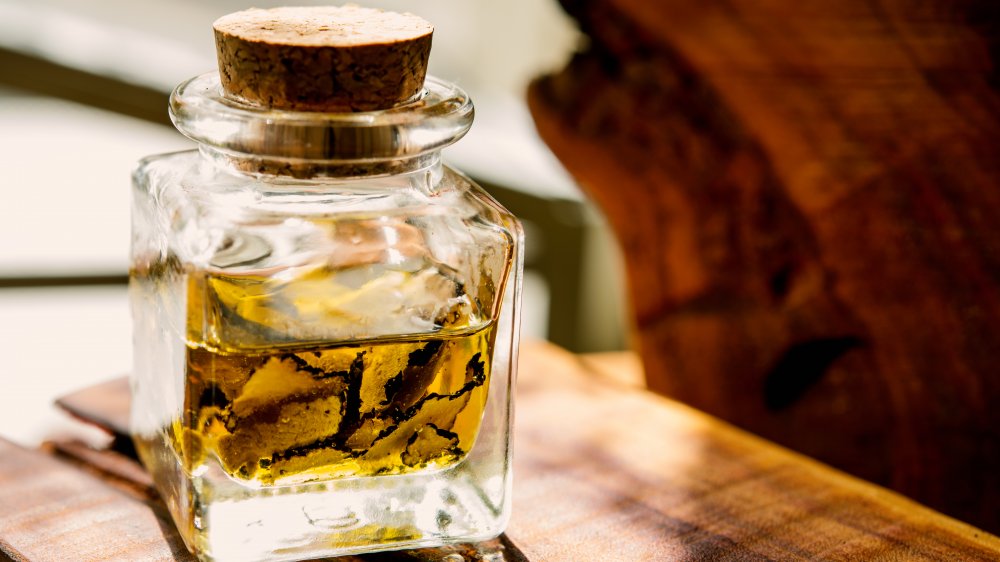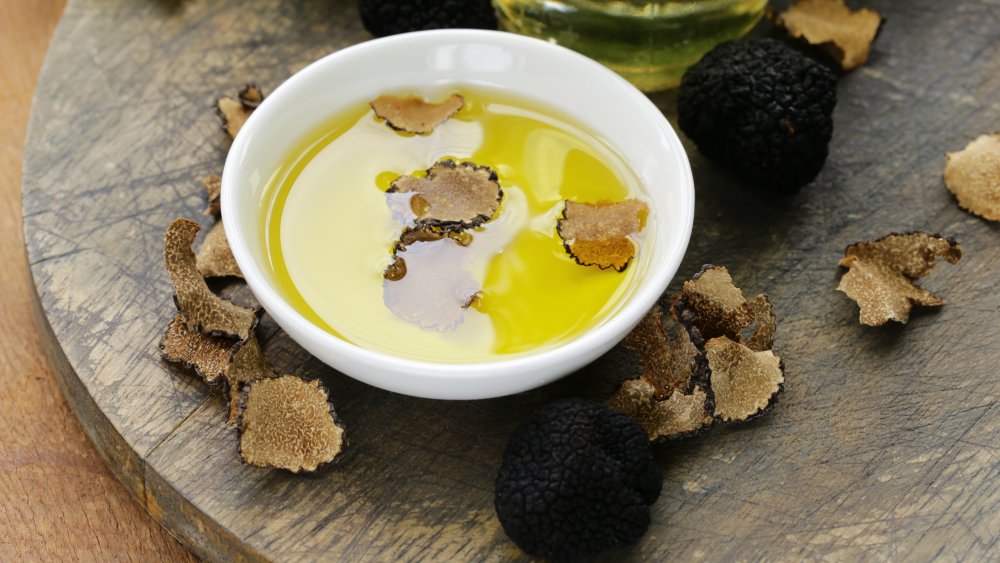The Ingredient You'd Be Surprised Is Inside Truffle Oil
Truffle oil is a popular pantry item with home chefs for its pungent aroma and flavor that can be used to add an earthy, mushroomy flavor that can spice up anything from potatoes to risotto to pastas. Truffles have been prized as culinary marvels for centuries, with an 1825 French politician referring to them as "the diamond of the kitchen" (via Priceonomics).
But given the fact that truffles are so expensive (MentalFloss notes black truffles typically retail for around $95 per ounce while white truffles can go for upwards of $175 per ounce), some people may wonder why truffle oil is so reasonably priced (via Amazon).
The easy answer is — because there probably aren't any actual truffles in your truffle oil. As Priceonomics so eloquently puts it, truffle oil is a "remarkably successful scam."
While traditional truffle oil did indeed contain truffles and was made by infusing them in high-quality olive oil, the majority of mass-produced truffle oils today are produced with a synthetically-produced ingredient called 2,4-dithiapentane, which is the molecule that gives truffles their distinct smell (via Tasting Table).
Why some chefs still use truffle oil
This process began in the 1980s, with mass production resulting in a price of around $6 per bottle.
While some cooks can't tell the difference between artificial truffle oil and the real thing (ignorance is bliss), some super tasters are much more critical. Gordon Ramsay called it "one of the most pungent, ridiculous ingredients ever known to [a] chef."
However, some chefs still use truffle oil, even in dishes that contain actual truffles. The thinking is that if the dish contains truffles, it must be special and it must be expensive, and so they hit the diner over the head with the truffle aroma to make sure they feel like they're getting their money's worth. But according to chef Daniel Patterson, some chefs continue using it because they don't even know the dark dirty secret (via The New York Times).

